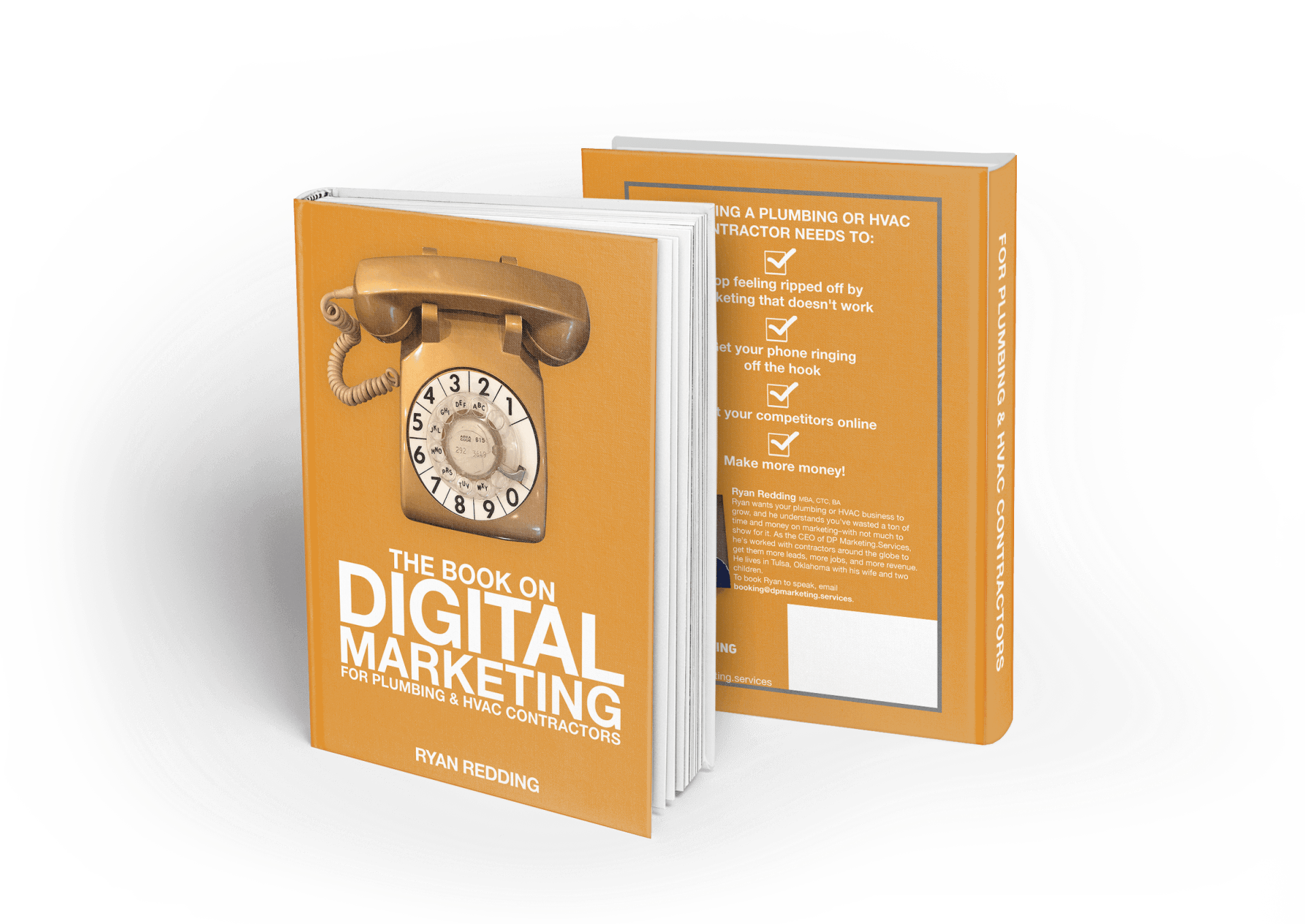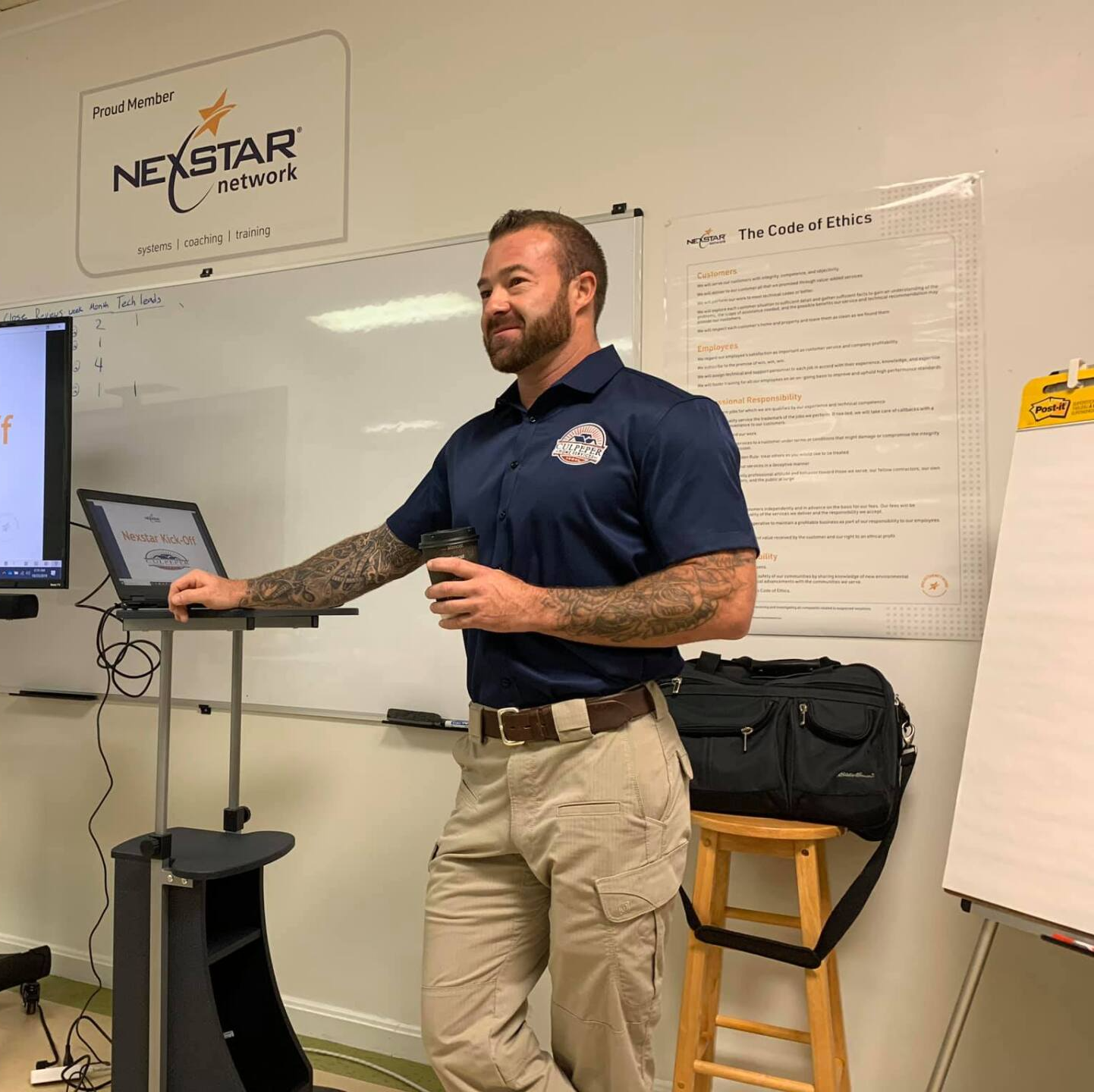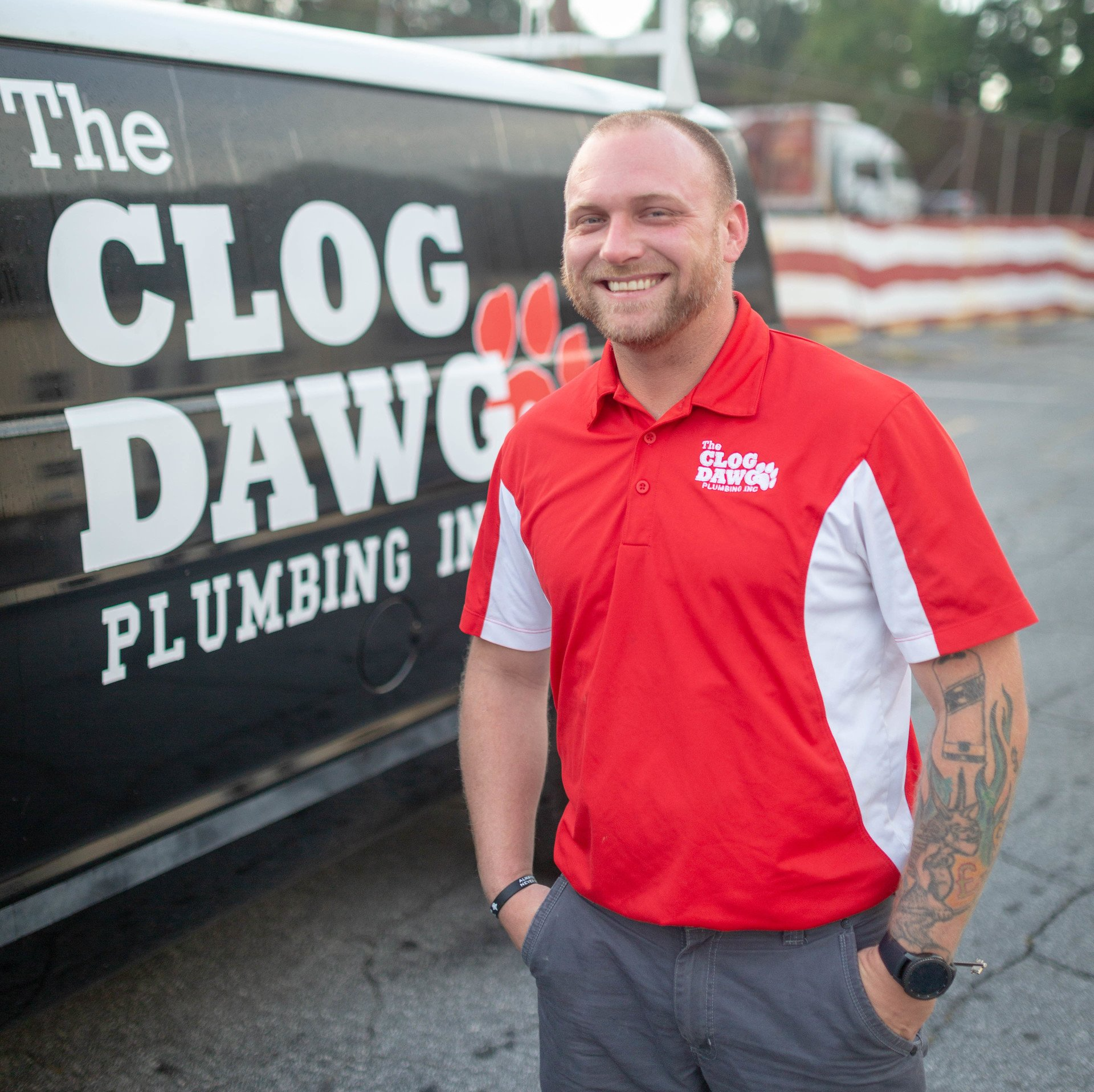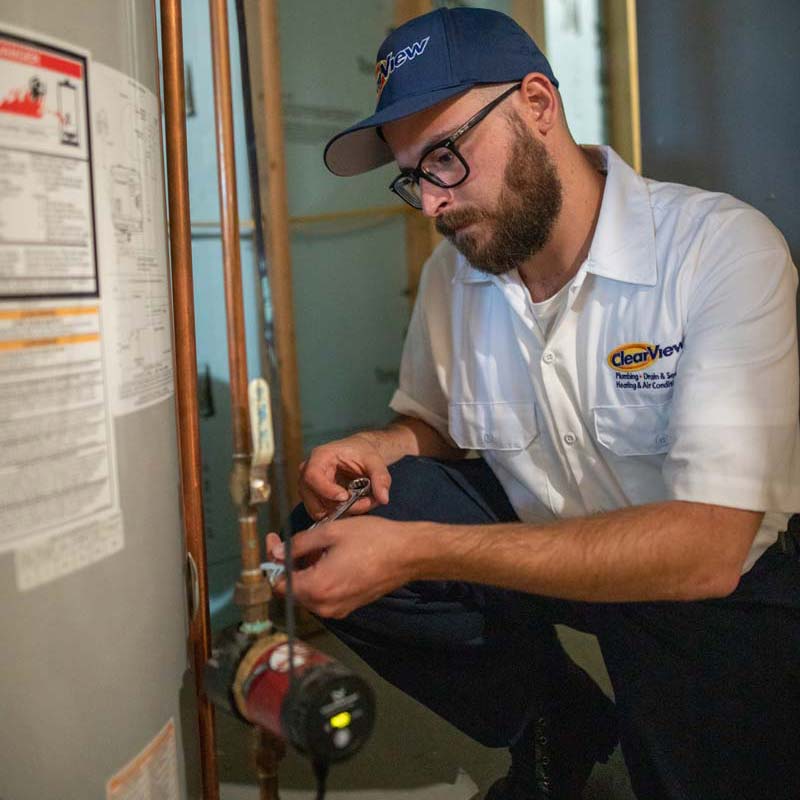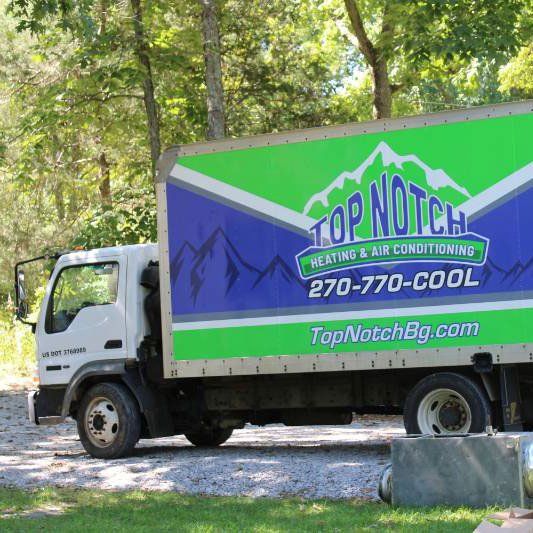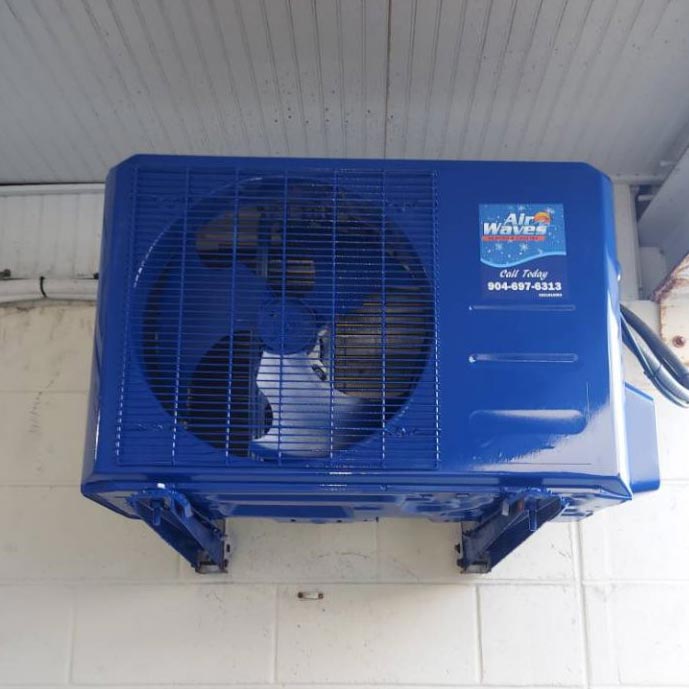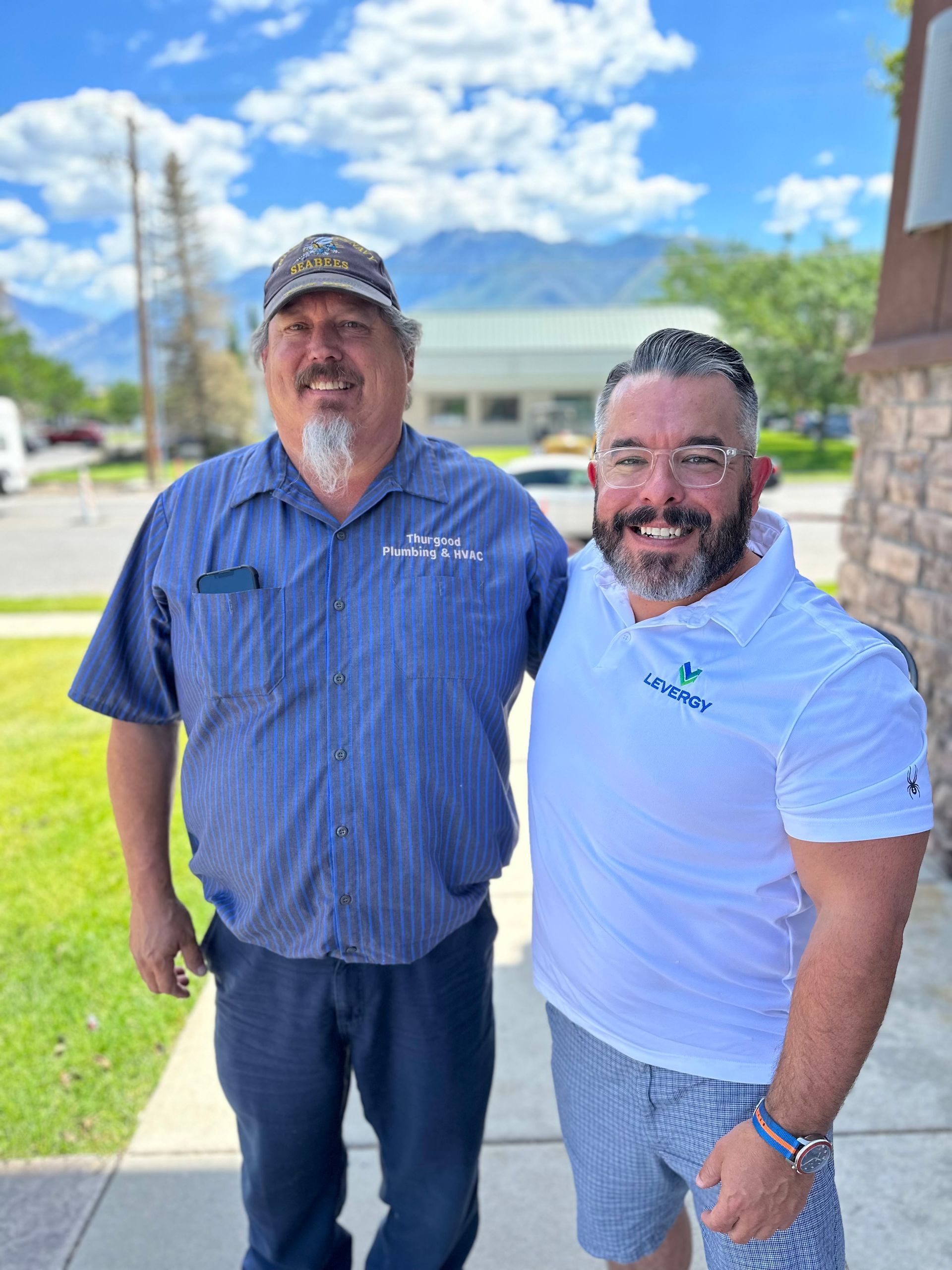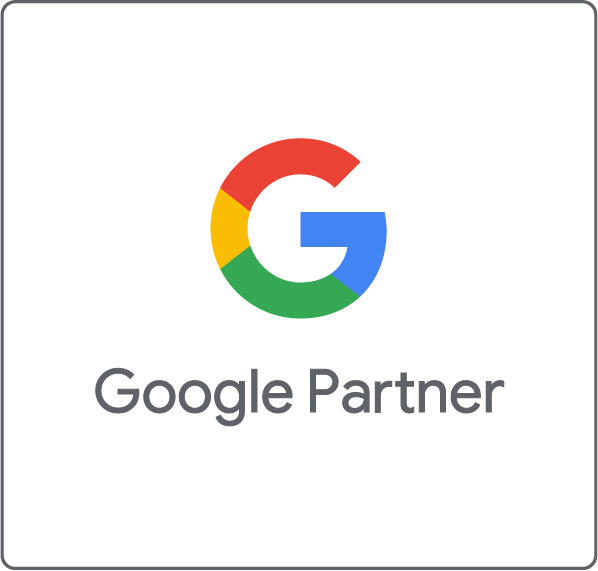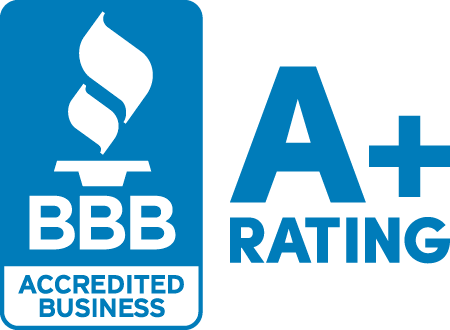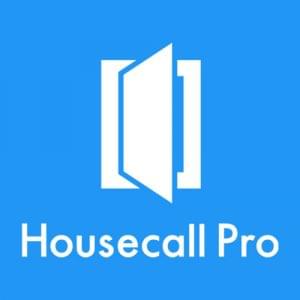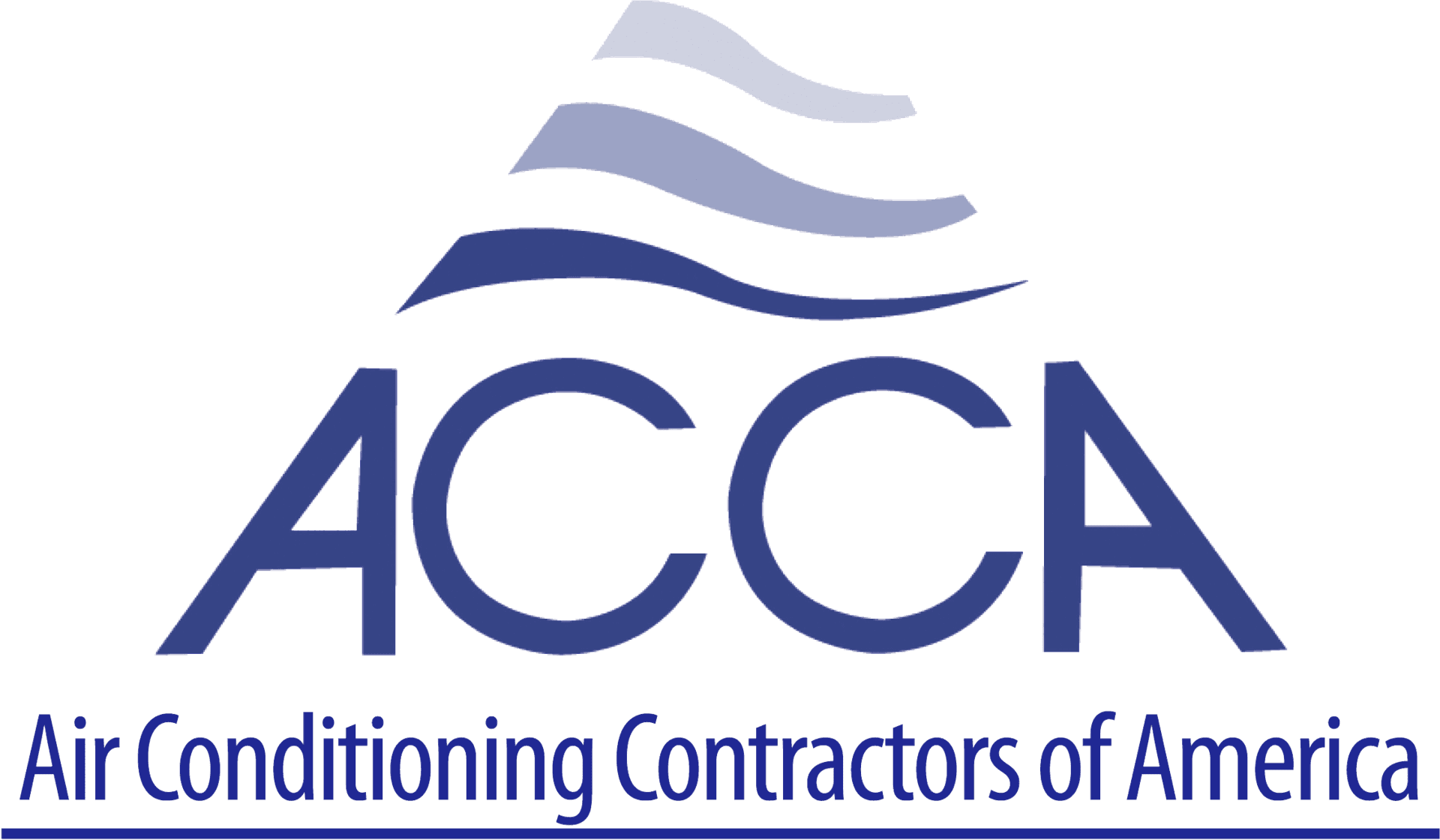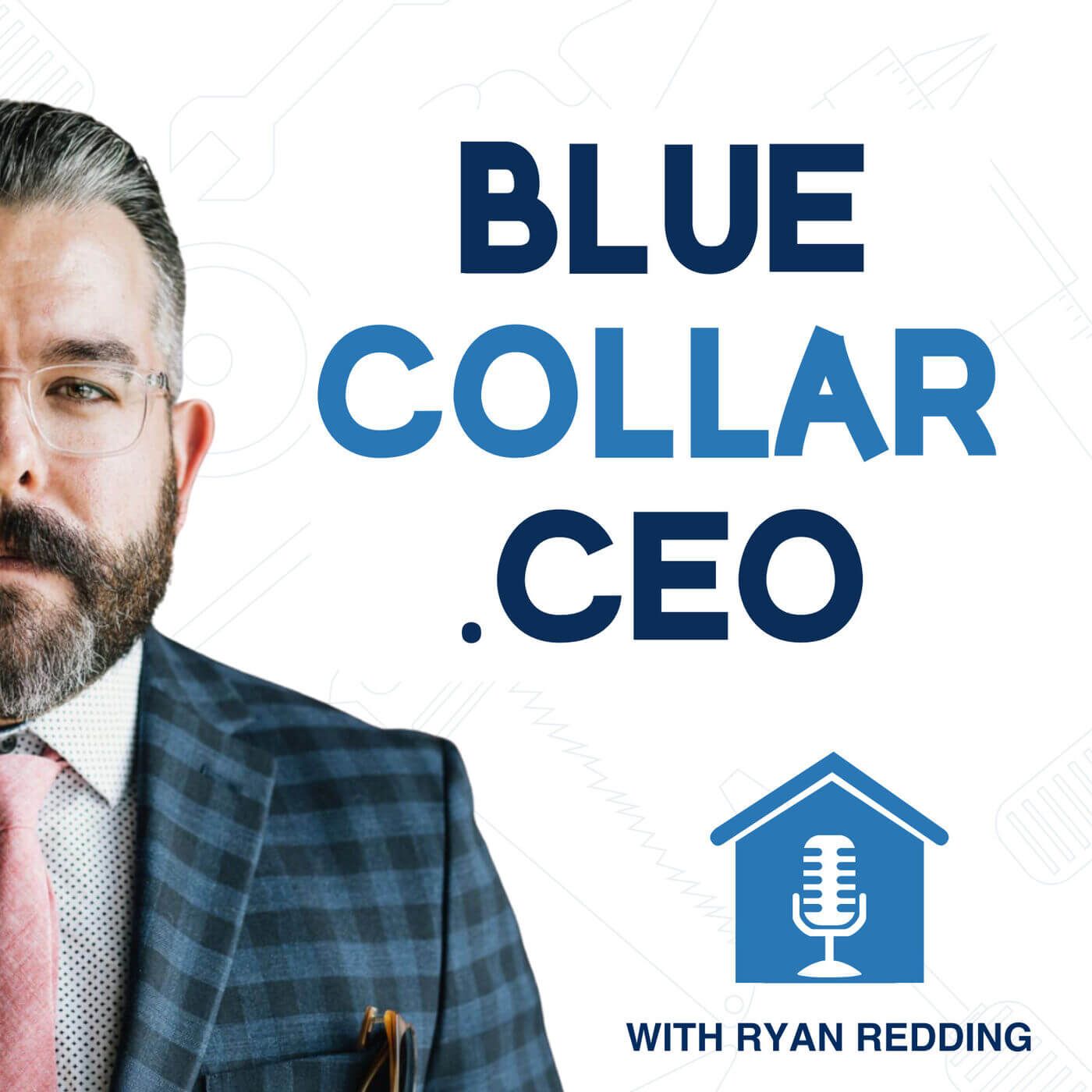Make More Profit With Your HVAC or Plumbing Company Using Flat-Rate Pricing
The Step-By-Step Guide To Maximizing Profits
Did you know that most HVAC and Plumbing shops go out of business because they don't know how to price their service? It's sad. And true. And completely preventable.
Most shops feel the pressure of having a stable business. Whether it's dealing with price-sensitive customers, or struggling to find good help, running a home service business is tough work. In fact, it's so tough, that HVAC and Plumbing companies have the HIGHEST failure rate over a five year period. Of any job. In any industry. In the entire United States.
So yeah. It's a tough job. But you already know this.
We've talked before about some of the most common reasons, and worked with contractors to help gain the tools and skills needed to grow their company for the long haul. In this article, we'll be talking about a big one: how to price your service.
Contractor Pricing Strategies
There's two common approaches that most shops use when pricing their service. Chances are, you probably use one of these two.
Cost Plus (sometimes called Time & Material)
Competitor Matching
Use your Cost Plus
if you bid a job based on the time you think it would take a job to be completed, plus parts and labor, and then add profit on at the end (either a dollar amount, or a percentage of surcharge).
Use your Competitor Pricing
when you use your competitor's bid to base your bid. In other words, if you know your competitor bid a job for $1,800, you'll attempt to undercut by bidding $1675.
Both of these are wrong.
When I say "wrong", I don't mean that they're unethical, or inappropriate. I mean that they're not optimized for your business. Chances are, they don't help you grow, and they may actually be bleeding you out.
You just may not know it yet.
You're taking the first step to maximize your profits
.
To maximize your revenue with solid HVAC or plumber marketing
, we should talk.
Flat-rate pricing is a pricing strategy that's designed with your business health in mind.
For the rest of the article, we'll assume that you understand the benefits of measuring your KPIs, and reading your financials, measuring your results for your marketing for your HVAC or Plumbing company , and other solid business skills. From this point on, we'll address how to build your Flat-Rate Pricing system for your business.
Moving from using Cost Plus or Competitor pricing means that you need to cover all of your overhead expenses (including things like driving to a job, or training your apprentice for a new skill), and make sure that there's reasonable profit margin for your tech, for your business, and for your customer.
On top of that, we'll help you setup a few price points for add-on services and tasks, and even service agreements.
To start, you need to determine your break-even point.
Start with your break-even point to start adopting Flat-Rate pricing.
You may think you already have a grasp on your break-even. If you don't, your break-even is the dollar amount that you need to bring in for every billable hour to cover all of the costs of running your business. (Yes, ALL of the costs.) Starting with this number is the best way to make sure you're charging enough money to pay all of your expenses, and make more profit.
Once you know how much a job will cost you (or your cost per billable hour) just to keep your head afloat, you'll be able to know whether or not you would make any money before you take a job. At the same time, you'll know if a job is even worth bidding on to begin with.
How to determine your break-even point.
Ready for the step-by-step? Let's do this.
- To start, it's best to break down your company into departments
. So, if you're an HVAC shop, you'll want to break it down into "Service", "Construction", and "Installations". If you cover several fields (HVAC/R, Plumbing, Electrical, etc), break each of them down into Service/Construction/Install sub departments. Ideally, even in the smallest shops, you'll want at least three departments: Service, Construction, and Installation. Make sense?
- Now that you've departmented, go through your financial statements. Let's pull out all of your overhead expenses
. This would be things like rent, utilities, marketing expenses, loan repayments, etc.
- Now that you know your overhead, approximately distribute those costs between your departments . So, if you're a small Plumbing shop with Service/Construction/Install that's heavy on the service side, maybe spread your overhead expenses 70%/20%/10% across the departments. (This doesn't need to be extremely precise, but it does need to account for 100% of your overhead across all departments.)
Now, let's determine your financial loss of materials from theft, loss, etc. This is called "Materials Shrinkage".
- Find the total amount you spent at parts houses.
- Multiply that number by how much you think your inventory shrinks. (For 15% shrinkage, multiply that number by .15. For 20% shrinkage, multiply by .20, etc)
So, your annual Material Costs x .2 = Materials Shrinkage of 20%. Make sense?
Next, we need to figure out how much money you need to keep your doors open and pay everyone, but not do a single job. This is called the "Cost of Doing Business". This is how you'll start:
- Add up all of your expenses . All of them. This means advertising, your salary, employee benefits, taxes, FICA... everything.
- Now, deduct anything that's a direct "job cost" , or any cost that only happens when you sell a job. So, you'll subtract things like subcontractors, commissions, equipment rentals, parts houses. BUT- keep labor in. Don't deduct the labor cost of your employees.
Now, let's actually identify your Cost of Doing Business.
Total Annual Expenses - Job Costs + Material Shrinkage = Cost of Doing Business
Got it? Good. Now, let's take it another step forward to figure out your break-even. One more step!
Cost of Doing Business / Number of Billable Hours Per Year = Break Even Point
(A good estimate is about 1,000 hours for a tech who only handles service calls, and about 1,750 for a tech who only does installations.)
It's helpful to do this as a whole company, sure. But this is also good to figure out your break-even point for your departments. In that case, you may have a tech that does both service & installs. No worries. Simply divide the billable hours in half for the new divisor (500 hours for service, and 875 for install). Piece of cake.
Congrats! You've now figured out exactly how much you need to charge for each billable hour just to stay in business. Nope, you won't have any profits here, but you'll keep the lights on. (As a fun test: how close is this number to your current pricing rate for a job?)
Also, it's good to note that everything is covered in this cost. Driving around. Training staff. Your technician's vacation time. Catching up on email. Posting your awesome service company to Facebook.
Everything. It's all here.
Chances are, your break-even point calculation is a higher number than what you're currently charging.
Don't worry. It happens. But now you know!
Let's move on to the next step:
How To Set Your Contracting Company Prices
At this point, technically, you could start estimating a profit margin on top of your break-even point and make money. But, as with everything we do at Levergy, we don't just want make a bit of extra cash for you. We want you to maximize your profits.
So, at this point, you're primed to offer your customer a take-it-or-leave-it price. And, while your business would be better off with the dollar earned for the job, you stand a very real chance of losing the customer to another option. (You can hear it now: "sounds good... let me get another estimate, too, and I'll get back to you".) Chances are, you lost a sale.
Did you know that
people like choices ? Not too many. Not too few. The goldilocks effect.
And you're going to use this to your advantage.
Now, we'll walk you through setting four price points which are almost guaranteed to get more tasks per call (which means a higher invoice and increased efficiency), and by creating a repeat customer at the same time. Your customer will save money. You'll make more money. It's a win-win.
Here's what you'll offer:
- Initial Task at Standard Rate
- Initial Task for Service Agreement Customers (15% discount)
- Additional Tasks at Standard Rate
- Additional Tasks for Service Agreement Customers (15% discount)
Even with the discount, you'll make more money. So let's start putting these together. We'll go in reverse order (and hopefully you'll see why).
Additional Tasks for Service Agreement Customers (15% discount)
This is your lowest price in your price book, and we'll make sure it covers your break-even, plus a 20% net profit. Here's how:
- Figure out how many hours a given task will take
- Multiply the number of hours by your break-even point
- Add that number for your job costs (materials, rentals, subs, commissions, etc)
- Divide that number by .8
Or, if this is easier:
(Job Hours X Break-Even) + Direct Costs / .8
This price not only covers all of your expenses for the job, but also covers loss, breakage, theft, warranty, travel, paperwork, training, insurance... AND a 20% before tax profit. And since this is your lowest margin item, winner-winner-chicken-dinner.
Additional Tasks at Standard Rate
This is your second lowest price. Here's what you'll do:
You'll divide your lowest price (Additional Tasks for Service Agreement Customers) by .85. In other words, it's 15% more expensive than the previous option.
To keep the math obvious:
[(Job Hours X Break-Even) + Direct Costs / .8 ] / .85
Initial Task at Standard Rate
This will be your highest priced task. It includes a number that's added to the 'Additional Tasks at Standard Rate' price. How much is added? Well... it's made up. Lots of folks add $50-75. The trick here is to add incentive for your customer.
Again, keeping with the math (although it's getting ridiculous to look at):
[((Job Hours X Break-Even) + Direct Costs / .8 ) / .85] + $75
(the $75 is the made up part)
So, for your customer, they're presented with an option to do more than just the bare minimum task. Which means you make more money.
Also, you can experiment with different fees ('dispatch fee', 'trip charge', 'service call fee') that are common in your market. Then, once your tech shows up at a call, you can offer to waive the fee for work performed on the same call. Again, the structure is to incentivize your customer to do more than just the minimum, and to have it done on the first visit when possible.
Which, again, means you make more money.
Initial Task for Service Agreement Customers
This is your second highest priced task. Whatever your Initial Task at Standard Rate price is, simply divide by .85.
Or again, more ridiculous math:
[(((Job Hours X Break-Even) + Direct Costs / .8 ) / .85) + $75 / .85]
And just like that, you've got 4 prices to offer your customer, and each of them will make you profitable.
What Flat-Rate Pricing Means for Your Customer
This is ultimately what matters, right? Studies have shown that customers prefer flat-rate pricing instead of hourly invoices. And, we've learned that customers like to have choices. So, when your tech shows up at a house for a call, and the customer sees the price difference between having 3 or 4 things repaired on separate trips, or having everything handled immediately under a service agreement discount, they'll be all over it. Sometimes, this could mean $300-400 in savings for them. Your customer? They love saving money.
As for you, you'll sell more service agreements. Have more profitable calls. Have happier employees. Have satisfied customers.
Oh. And make more money.
While we focus on marketing for Plumbing, HVAC, and home service companies , we really just like helping companies make more money. We'd love to talk to you about helping you, too!
Was This Helpful?
Sign up here, and we'll automatically email you as we publish new articles that you may find useful.
Was This Helpful?
As Seen In:
Is your website helping or hurting your SEO efforts? Find out now for free.
We've got give-a-damn for days.
When my team talks with new clients, we hear a ton of frustration, overwhelm, and general fed-up-ness.
I'm guessing you can relate.
Maybe you've been trying to figure out all this marketing stuff on your own OR you've handed a crap-ton of money to an "expert" for no apparent reason.
Your phones still aren't ringing like they should.
Your advertising still isn't performing like you expected.
Your website's still not ranking or converting like it needs to.
You can't figure out why... and/or your current marketing "partner" isn't 'fessing up.
We think you deserve better.

Ryan Redding
CEO Levergy
Author of The Book on Digital Marketing for Plumbing and HVAC Contractors
Here's how we'll get you more plumbing, HVAC, electrical, garage door, roofing, or other home service leads:

Tell us what's keeping you up at night.
Let's get on a call so you can tell us where your business is and where you want to go. We'll follow-up with a free, comprehensive assessment and actionable tips.

We'll help you fix it.
If you like what you see so far, we'll put together a customized plan with transparent, flat-rate pricing—and then get to work growing your business.

So you can breathe easy.
Have peace of mind knowing you have a true partner on your side who cares about your success as much as you do.
What you get is important.
How you're treated is what sets us apart.
Culpeper Home Services
"... they always go above and beyond the call of duty. I'm impressed with their work ethic, loyalty, and integrity."
- Russell Furr, President
The Clog Dawg
"[Levergy] understood my specific needs and got the work done—bypassing all the unnecessary nonsense. And now business is booming!"
- Steven Douglass, President
Your mileage may vary.
Better results are here.
Discover how to stop wasting money on marketing that doesn't work, and make your phone ring off the hook.
